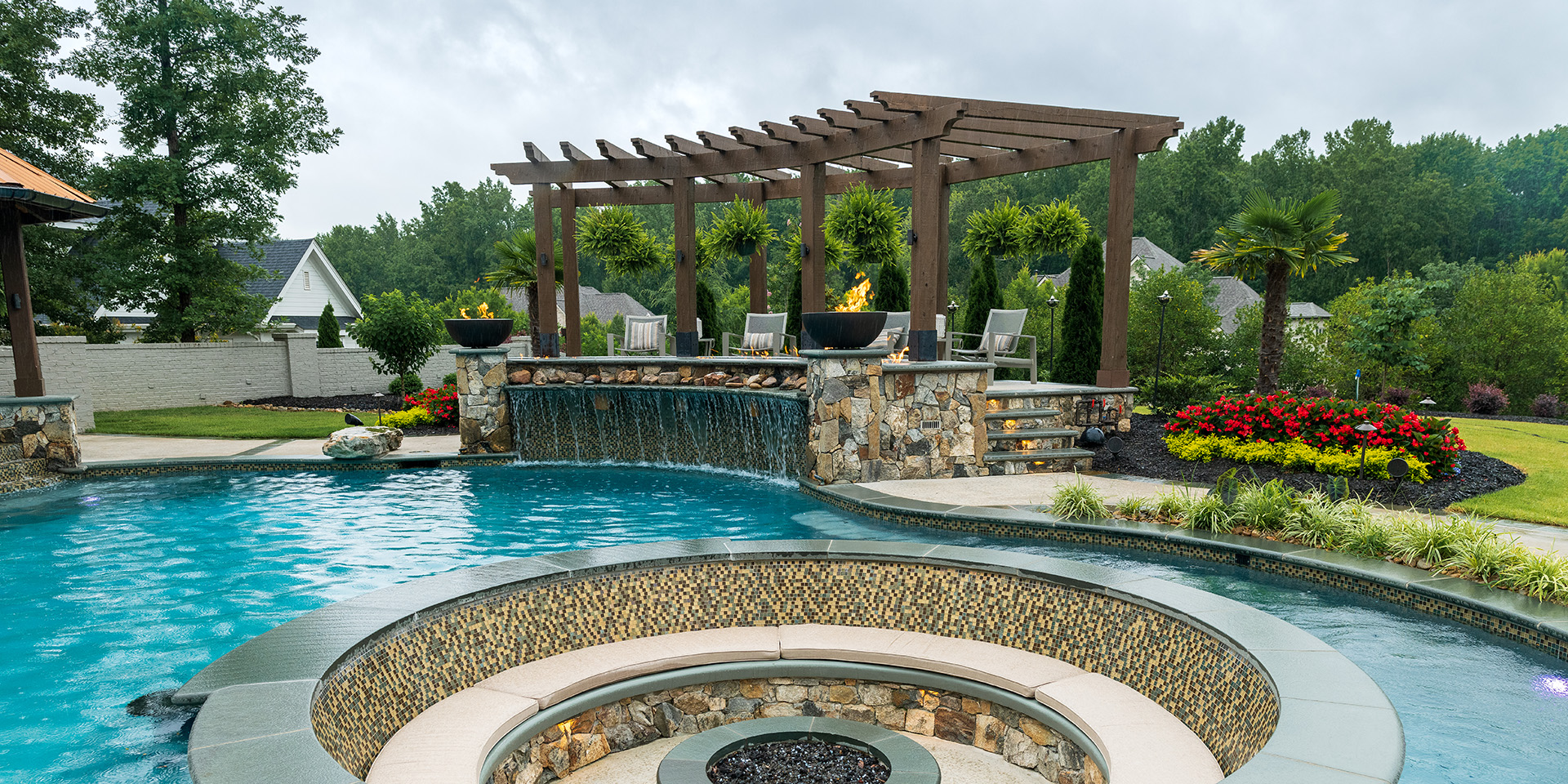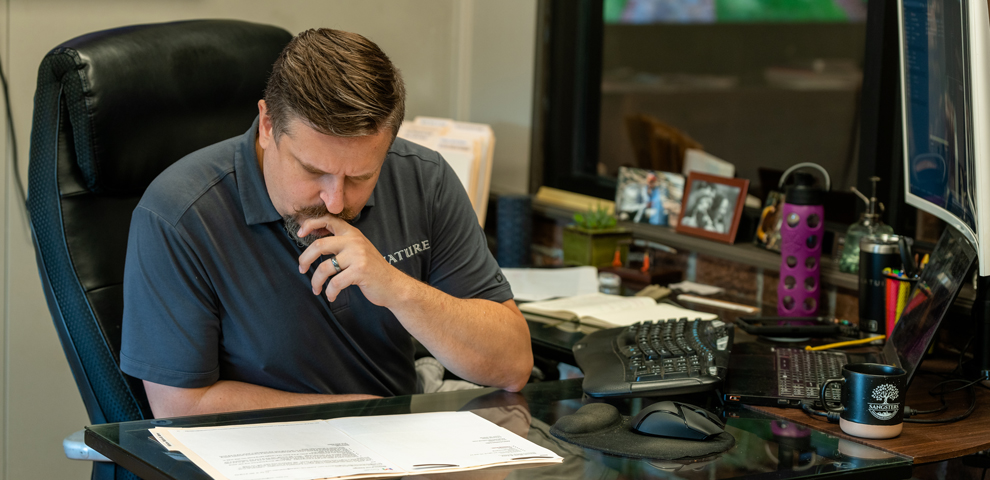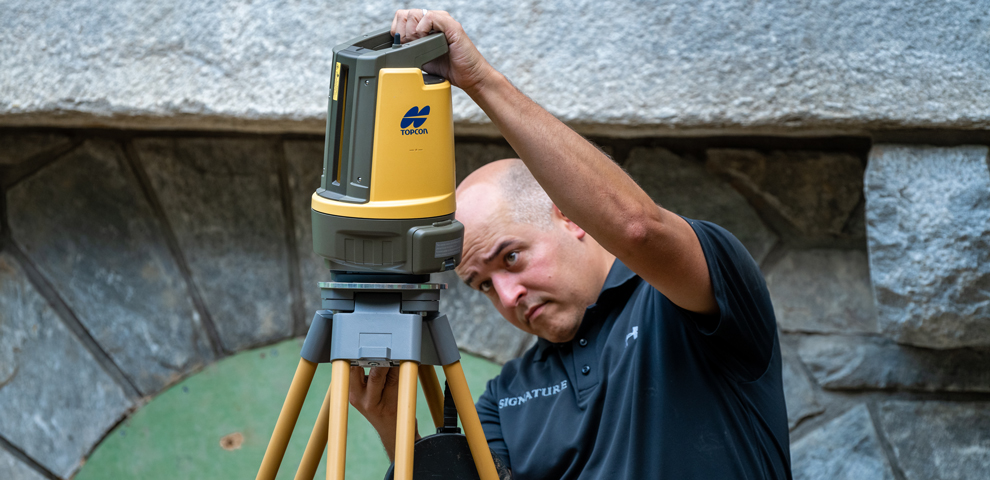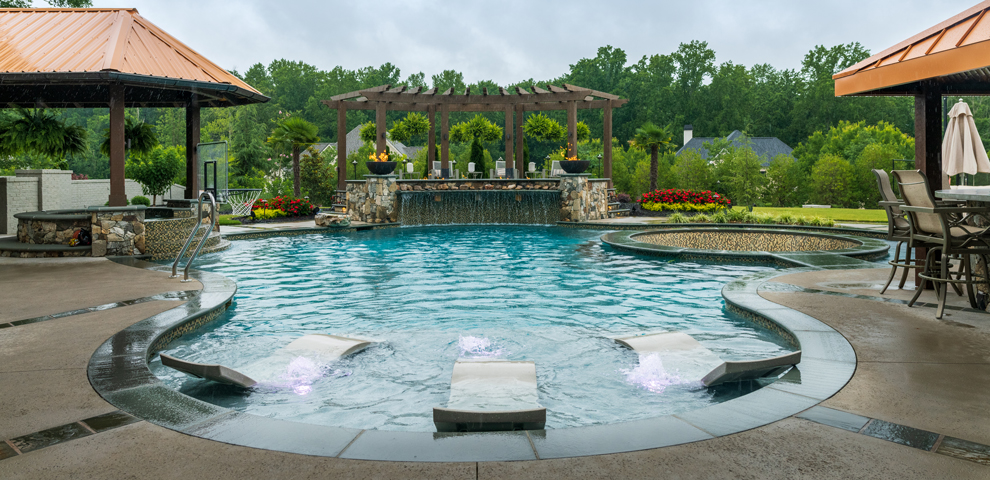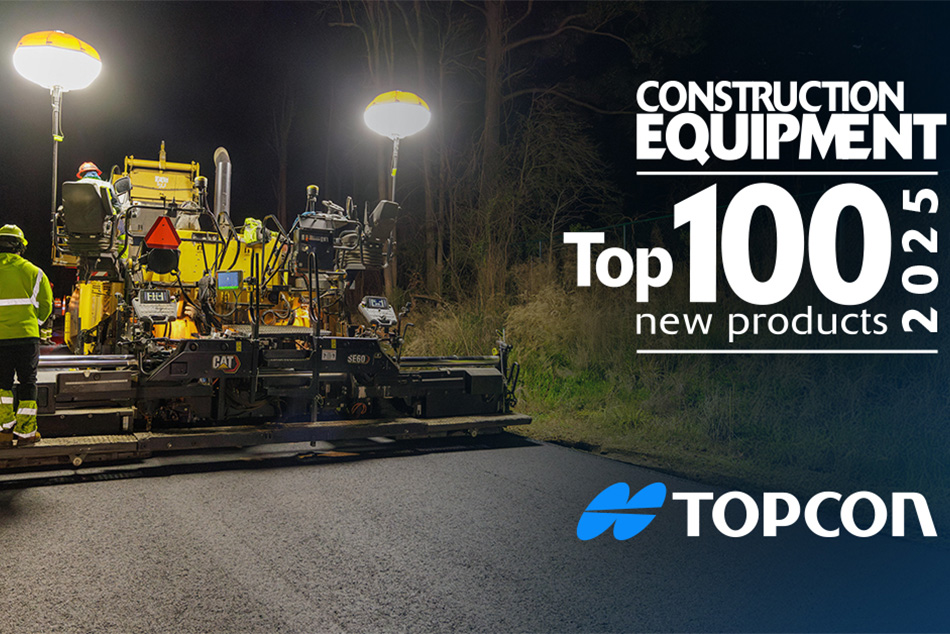By comparison, using the robotic solution, he said they now go out with the robot and within 30 minutes, gather the data themselves, bring it back to the office and create the template. That’s critical when designing for the stone — the material used in the caps, the coping around the pool, on the deck, in water features, etc. Davis added that creating a custom coping had always been a challenge for them.
“But being able to come back here and put all that into CAD, ensures that we are getting the most accurate product,” he said. “That means it’s easy for the field crews to install and eliminates the risk of needing a re-cut. Anytime you can minimize the need for reworking, you are ahead of the game. Based on template savings alone, we will probably get our investment in the robot back in a year and a half, maybe sooner.”
Pooling Their Resources
One unforeseen benefit the robotic solution has brought Signature is the possibility of alternative revenue streams. Their custom stone supplier, upon learning of the difference the robotic unit has made with templates, said their customers are always looking for that service and asked if Signature would be willing to do such work for them. Another possibility is providing accurate measurements for custom pool covers.
“When a customer calls and wants a cover for their spa or pool, in the past we had to go out and measure for those,” said Potoniak. “Now we just grab the data from the as-built, which is more accurate, and send that to the pool cover company. We are considering both of these possibilities — and others.”
When asked about future growth and the possible addition of a second robotic solution, Gatas said that they are probably near capacity and don’t foresee growing much larger.
“We really like the family structure here and don’t necessarily want to grow to be a huge company,” he said. “However, it is always nice to add some money to the bottom line and, by improving efficiencies, the robotic solution is allowing us to do that — without having to take on more projects.”
More Than Just a Pool
After talking to Gatas, Davis and Potoniak, one leaves with the impression that they see their work as more than simply designing and building pools. Each is also quick to point out that they are far from the most important part of the puzzle.
“It’s the guys in the field who really help bring each project to life,” said Davis, a sentiment echoed by the others. “It’s not all about the design, or the cost, or the way we make it fit. It’s the field crews who really make this art come to life.”
Gatas added that, from Craig Sikkelee on down, everyone in the company is immensely proud of what they do. “We don’t just build pools here, we provide family environments that help develop and maintain relationships,” he said. “We create a way for families to spend more time together, to get close, to stay home more often, to enjoy each other, to make memories. We take great pride in that.”
Davis feels so strongly about what they do that, in his office, he has a stone with the word “Topophilia” etched in it. “It means ‘the love of an outdoor space’ and I often share it with my clients,” he said. “I want them to have topophilia when they get their space. I want them to cherish it and feel it is their favorite retreat, one they choose even over vacation. We all get great satisfaction in knowing that we helped
bring that to their lives.”












